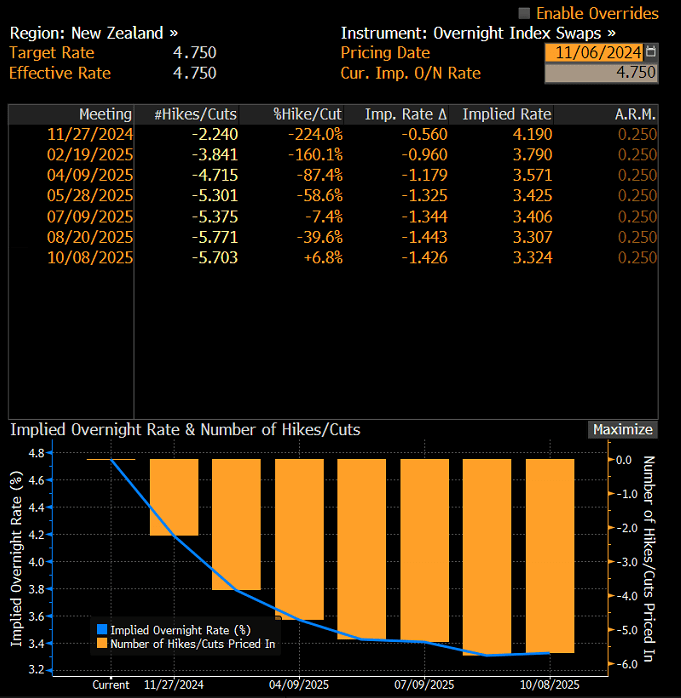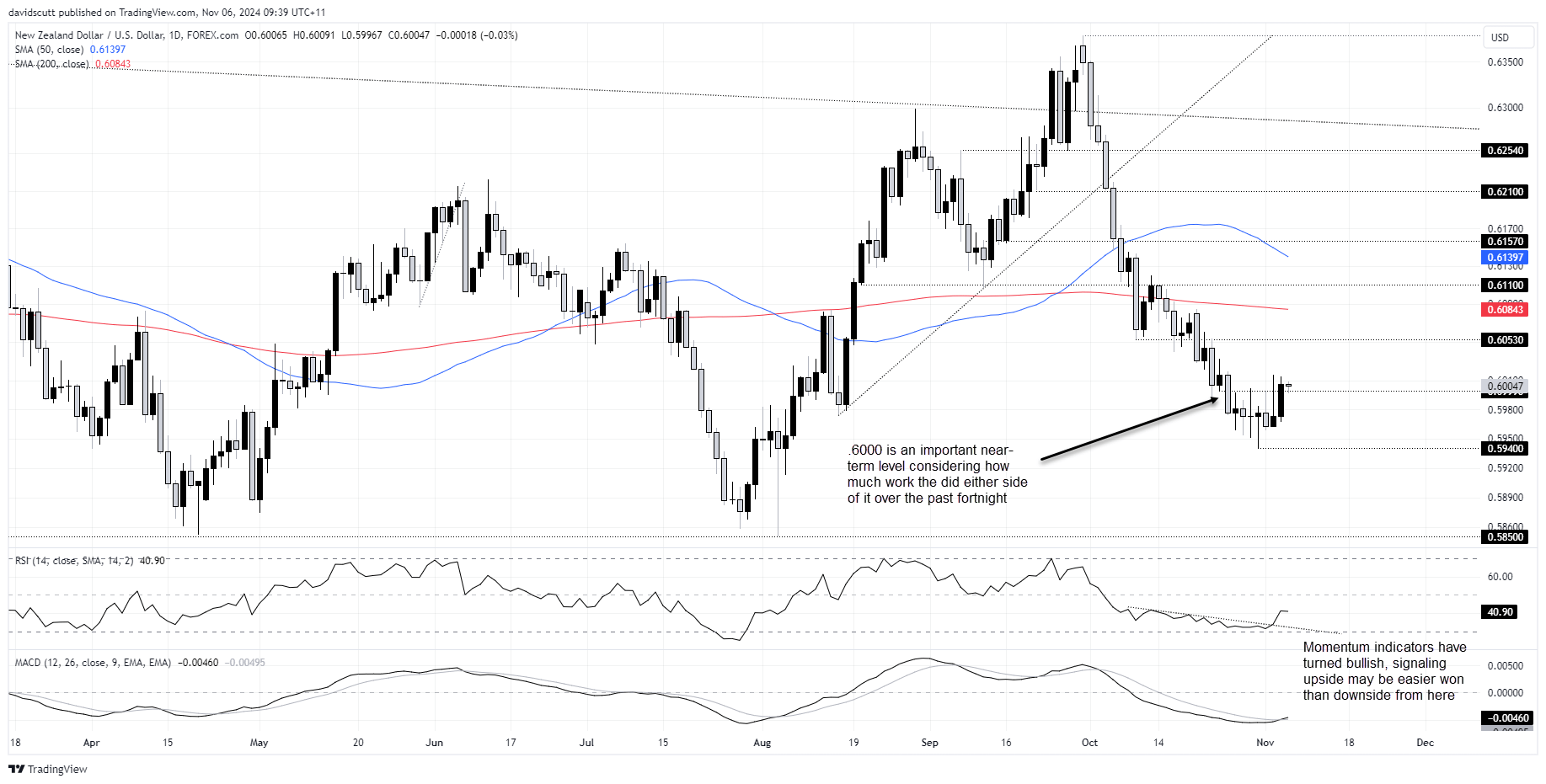- NZD/USD edges higher, ignoring weak September jobs report
- RBNZ may front-load cuts, with risk of a 75bps move in November understated.
- Kiwi gains tied to US election outcome, vulnerable to extreme two-way directional moves
Overview
A sizeable decline in labor force participation masked what was another extremely weak New Zealand employment report, keeping the risk of a 75 basis point rate cut from the Reserve Bank of New Zealand (RBNZ) on the table in November.
NZD/USD has ignored the report and focused instead on the outcome of the US presidential election which will be the dominant market event over the remainder of the session.
Participation Plunge Masks Weak Jobs Report
Everywhere you looked in the September quarter employment report, weakness was evident, fitting with an economy mired in recession.
Unemployment rose two-tenths to 4.8%, moving further away from the cyclical low of 3.2% set two years earlier. Employment declined by 0.5%, above the 0.4% fall expected, while private sector wages growth came in at 0.6%, down a tenth from the level expected.
Perhaps the most telling statistic was the collapse in the participation rate which fell to 71.2%, down a significant 0.5% over the quarter and 0.8% from a year earlier. That equates to 57,000 Kiwis who left the labour market altogether, limiting the rise in overall unemployment. Markets were looking for a smaller decline to 71.5%.
While the 4.8% unemployment rate was two-tenths lower than expected, the undershoot was not due to labour market strength but acute weakness. You don’t give up looking for work if decent work is available.
Underlining the point, the number of unemployed rose 24.2% over the year to 144,900, with far greater increases recorded for long-term jobless.
While youth unemployment and labor market underutilization declined marginally, like the unemployment rate, that was likely driven by weaker participation rather than more people securing work.
Don't Rule Out 75bps RBNZ Cut Next) Month
With the report undeniably weak, coming just a day after RBNZ governor Adrian Orr expressed concern about the lag between interest rate cuts and their impact on the real economy, it complicates the RBNZ’s next interest rate decision after it already accelerated the pace of rate cuts when delivering a 50-point move in October.
Currently, 56 basis points of cuts are expected for the November 27 meeting, implying a 50-point reduction is fully priced with around a one-in-four chance of a 75-point move. The probability for the latter looks a tad light considering the persistent weakness in the economy, especially when nearly 100 basis points of cuts are priced over the next two meetings. The path of least regret comes across as front-loading easing, rather than staggering it over several months.
Source: Bloomberg
NZD/USD: US Congress Composition to Drive Near-Term Directional Risks
Despite the dovish detail of the jobs report, NZD/USD continues to grind higher as we approach the start of the vote counting in the US presidential election, reacting as you would expect under a split Congress scenario. While the closeness of the polls suggests that’s a likely outcome, watch for early voting patterns for signs of either a blue or red wave. If that’s the direction the count takes, Kiwi gains are likely to evaporate quickly, especially if the Republicans emerge victorious.
Source: TradingView
NZD/USD managed to close above .6000 for the first time since October 25 on Tuesday, backtesting the level briefly before pushing higher once again. With RSI (14) and MACD generating fresh bullish signals on momentum, upside could prove to be potent if we see a split Congress emerge.
.6053 is the first resistance level of note with the 50-day moving average and .6110 is the next after that. On the downside, below .5940 there’s little visible support until .5850
